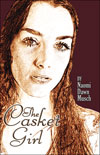I read a pretty popular novel recently, written by a fellow author in my genre, and I enjoyed it. I might have given it a solid four stars. BUT, I mentally only awarded it a three-star effort for one single reason. Near the end of the story, the author seemed compelled to explain the lessons the characters learned. The paragraph or so didn’t go into great detail, and it wasn’t clumsy, but still, the author just had to point the lesson out.
Don’t. Do. That.
There’s a difference between theme and lesson. Novelists often write around themes. We write around thematic ideas such as longing for love, searching for freedom, overcoming fear, spiritual rebirth, conquering abuse, surviving physical disaster, knitting family relationships, and a host of other themes. This is especially true in Women’s Fiction, Romance, and Young Adult Fiction, but in other genres as well.
Lesson, on the other hand, is about moralizing. It’s like when your grade-school teacher wanted you to write a tale and include “the moral of the story.” You might have even been taught to write the actual words at the end of the story: The moral of the story is… Maybe you wouldn’t be so obvious now, but it’s still tempting to point out what our hapless characters learned. Hmm… Too bad. It wrecks the flow when we do that. It stinks of author intrusion (the author getting in the way of the story).
We don’t state a moral. We don’t tell a lesson. That means our characters don’t either. We must let them live their lives for good or for bad, and we must let the readers come to their own conclusions.
This can be pretty tricky, and the temptation to make a hero’s or heroine’s life-lesson clear is like biking down a road at night and being drawn to oncoming headlights. We know we should get out of the way, but it feels like we’re bugs being pulled at by the bright glare, and in fact they’re blinding us. Moralizing does that. It blinds us to the distance we’re creating between our story and the reader’s interest. We’re getting ourselves as the author in the way of the story. We can’t see how preachy our writing efforts appear, when in fact, telling the summarizing moral will make a reader like me go, phhht! and I might set the book aside because I feel like I’ve been talked down to, not by the character, but by the author.
Here’s an example:
Jenna thought back over the weeks she’d spent working on the theatrical project with Brian. She’d learned so much! Mostly she’d learned that her role was important. It didn’t matter if it was small. Everyone had a part to play, and without her, the show wouldn’t have been the same.
She sighed. Brian made her see and understand just how important she was.
And then there was mom. Mom and dad were getting along so much better now. Mom, too, had realized that even when things didn’t go the way she had planned, life would be better if she just let go a little on the control now and then. Jenna guessed she and mom were quite a bit alike after all.
Okay, now that wasn’t super overbearing. But I bet the reader had already figured in earlier pages that Jenna learned she was important, that mom learned she couldn’t be a control freak, and that Jenna and her mom both had self-image issues and were a lot alike. The reader doesn’t need it summarized for them.
So fight the urge to tell about the morals and lessons of the story. Stick to weaving themes through the book in a way that the threads blend in subtly, adding strength and color to the fabric of the tale without sticking on a bright, moralizing patch at the end.
Exercise:
Go to your WIP and look for any cases where you might be explaining to the reader what the characters are learning. Instead, make sure their actions have shown their learning curve throughout the story. Don’t bother repeating it at the end.
















Speak Your Mind
You must be logged in to post a comment.